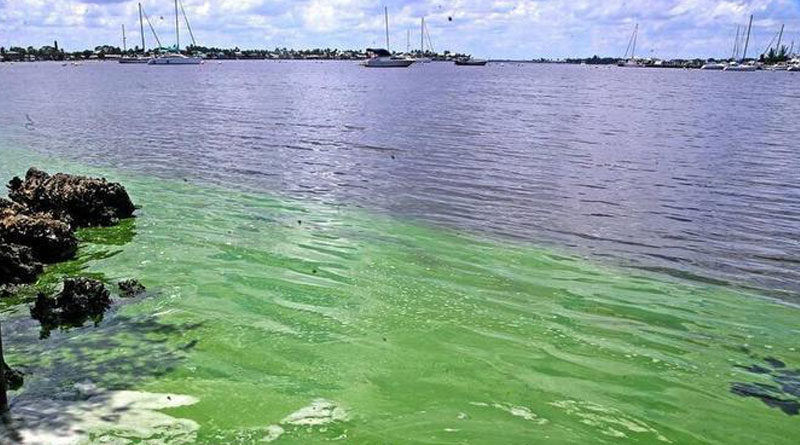Florida’s Task Force issues recommendations on blue-green algae that kills fishes and harms humans
DORAL, FL – Florida’s Blue-Green Task Force issued a list of recommendations on a meeting held on Wednesday, September 25, to tackle blooms of blue-green algae in Florida.
The Task Force, recently created to help protect Florida’s environment, provided a roadmap to improve water quality and prevent the toxic algae from continuing to harm people and wildlife.
First, the task force proposed a more systematic water testing and monitoring to get a better understanding on contamination patterns. The state dramatically cut water quality monitoring systems over the last decade.
It also suggested to better inform the public about the health risks of swimming in algae-laced water, taking into consideration that sometimes toxins from the blue-green algae can be present in the water even when there are no signs of blooms on the surface.
The list of recommendations also included improving advisories and overall communication with the public about the threat of harmful blooms by designing clear standards for no-swim advisories.
On the other hand, scientists of the task force talked about the contribution of agricultural runoff in the excess nutrients that feed the blooms, pointing that farms use fertilizers, such as nitrogen and phosphorus, that contaminate Florida’s canals and water bodies.
It should be noted that farmers should adhere to a set of ‘Best Management Practices’ standards when using water, fertilizers, and pesticides in order to minimize the sector’s impact on the state’s natural resources.
However, as reported by the Miami Herald, compliance with these standards is voluntary, and it’s unclear what percentage of farms actually engage in these practices and keep records of their nutrient-reduction and resource-management efforts.
“We need to address BMP effectiveness,” said Wendy Graham, a task force member and director of the Water Institute at the University of Florida to the Miami Herald.
For all this, task force members also included proposals to adapt these practices and check the manuals that are used by farmers engaged in the BPM program.
Septic tanks were also on the table since the more than 2.5 million units in Florida represent a significant source of nutrients found in groundwater.
On this matter, scientists proposed a deeper regulatory oversight that would be developed by the Department of Environmental Protection, more research on the potential benefits of converting to a sewer system or upgrading septic tanks, and inspecting them regularly.
In addition, the task force recommended a state-wide water quality monitoring system that allows for environmental authorities to effectively measure if their efforts are working.
Finally, the list of recommendations included stormwater treatments systems. Regarding this, scientists suggested the creation of an inspection and monitoring system to spot failing infrastructure, as a great percentage of stormwater systems, contribute to dumping nutrients into waterways.

